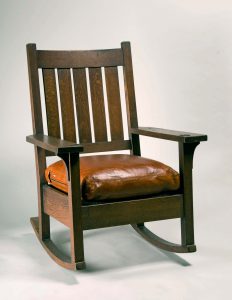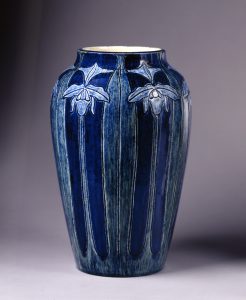Factories were not only producing badly designed goods but in reducing human beings to cogs in wheels, they destroyed dignity of labor. Arts and Crafts artists and designers aimed to restore beauty and integrity to domestic products such as dishes, vases, chairs, and tables as well as to interior design and architecture itself. Furthermore, through handicraft, they aimed to revive the pride of the artisan.
Their movement was built on basic principles: preference for regional materials, inspiration from local sources and traditions, honesty of expression, handcraftsmanship, and especially unity of design. In the latter half of the nineteenth century, the ideas of the early reformers gradually spread across continental Europe and to the United States where they were adopted and adapted by a wide variety of designers, artists, and architects. Gustav Stickley (1858–1942), founder of the Craftsman Workshops, became one the most influential designers of the American Arts and Crafts movement. This was not only through his production but through his publication, The Craftsman (1901–16), which was crucial to the expansion and development of Arts and Crafts principles in America.
Works in this gallery, all selected from the Morse collection, illustrate the simple beauty of the objects created by American art potteries, furniture makers, metalworkers, and others who took up the ideals of the Arts and Crafts movement.




